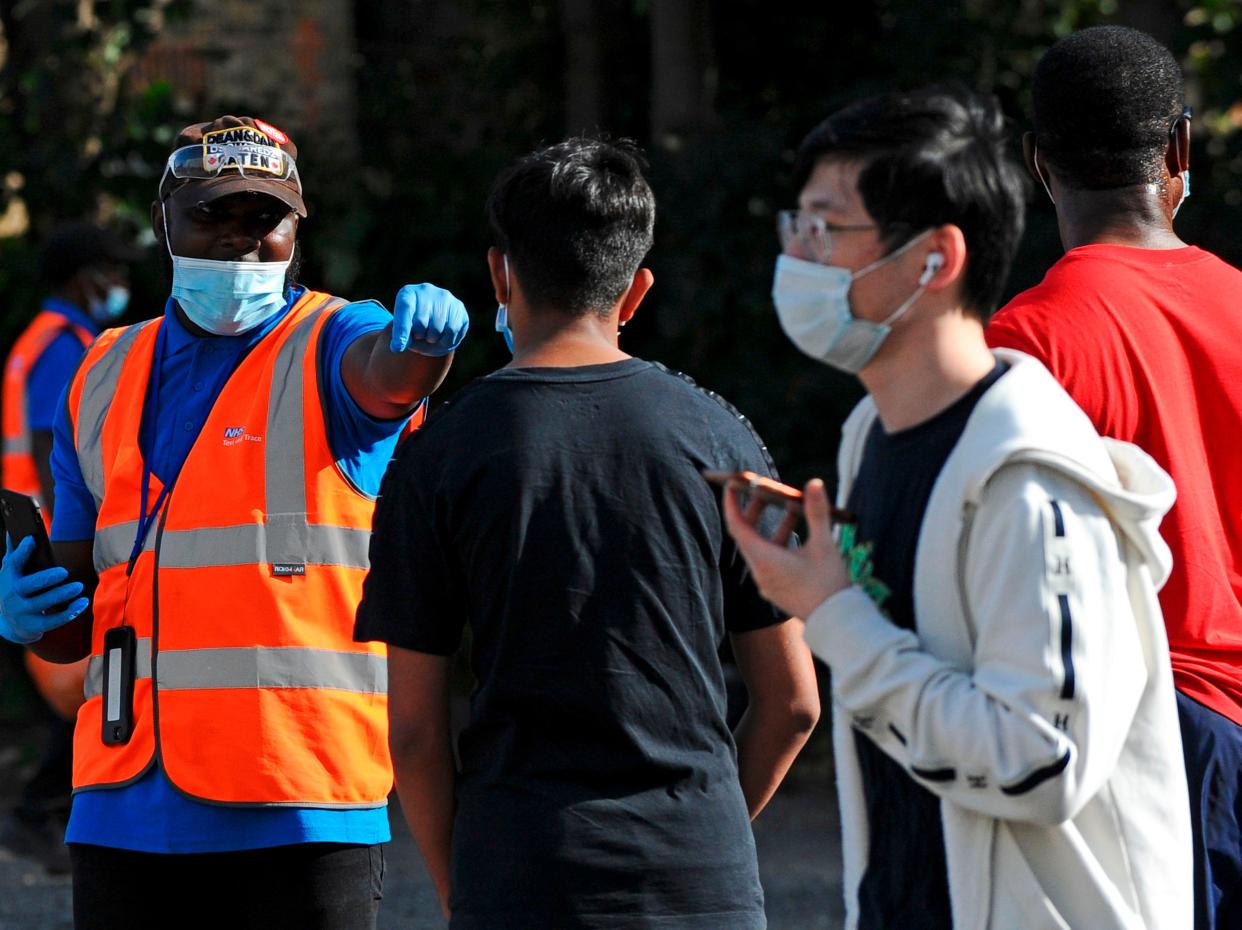Coronavirus: Government’s test and trace system has ‘concerning’ worst-ever week

The government’s contact-tracing programme failed to reach more than 30 per cent of close contacts of people who tested positive for the coronavirus in England, the latest figures show, in what is the worst week on record since the beginning of Test and Trace.
Some 68.6 per cent of close contacts were reached through the system, once dubbed “world-beating” by prime minister Boris Johnson, in the week ending 30 September, according to data published by the Department for Health and Social Care (DHSC).
This is the lowest weekly percentage since Test and Trace began, and is down from 72.5 per cent in the previous week.
Meanwhile, only two-thirds of positive Covid-19 cases were transferred to the system over the same time period.
The government said that 51,475 people tested positive for Covid-19 between 24 and 30 September - a 56 per cent increase on the previous week - but only 34,494 people were transferred to the tracing system in the same week.
Of the 16,981 cases that were not transferred to the system, roughly 11,000 have been attributed to those individuals who were left out of the government’s data due to an apparent “IT failure”.
“It is important that the government continues to publish these statistics," Professor James Naismith, Director of the Rosalind Franklin Institute, said. “Unfortunately they are not encouraging.
“Particularly concerning was that only 34, 494 were transferred to tracing. 11,000 of the gap resulted from last week’s IT error. Even so, a gap of around 6,000 is disappointing.
“If a significant portion of positive cases are not entering tracing in a timely manner, this will undermine the value of the system.
“Crucially we have very little insight into how effective isolation is for both positive cases and their contacts. Failure to isolate will further undermine the system.
“As case numbers increase, the time, energy and cost of scaling up this system will continue to grow.”
A total of 101,782 people were identified as coming into close contact with someone who had tested positive between 17 September and 23 September.
The number of contacts identified increased by 11 per cent compared to the previous week and is more than three times higher than the end of August.
For cases handled by local health protection teams, 97.1 per cent of contacts were reached and asked to self-isolate in the week to September 30. In contrast, cases handled online or by call centres returned a 62.4 per cent successful contact rate.
The data also showed that the percentage of people who received their ‘in-person’ test results within 24 hours dramatically decreased from the previous set of figures, falling from 38 per cent to 25.7 per cent.
In-person testing takes place at regional and local sites or mobile testing units.
Prime minister Boris Johnson had pledged that, by the end of June, the results of all in-person tests would be back within 24 hours.
He told the House of Commons on 3 June that he would get "all tests turned around within 24 hours by the end of June, except for difficulties with postal tests or insuperable problems like that".
The government’s latest figures also showed that, between 24 and 30 September, the median distance travelled for an in-person test decreased to 3.7 miles from 4.3 miles in the previous week.
Ninety per cent of people who booked a test at a test centre lived 16.5 miles or less away.
A total of 588,895 people were tested for the first time, consistent with the previous three weeks - but an increase of 27 per cent compared to the end of August.
Since Test and Trace began, 7,654,018 people have now been tested for Covid-19 at least once.

 Yahoo News
Yahoo News 
